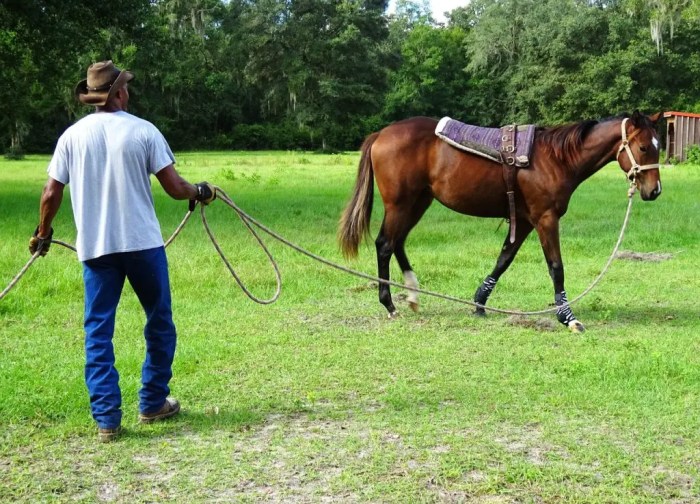How do you break a horse? This question has puzzled and fascinated horse enthusiasts for centuries. The process of horse breaking, also known as gentling, is a delicate and nuanced art that requires patience, consistency, and a deep understanding of horse behavior.
In this comprehensive guide, we will explore the intricacies of horse breaking, from safety considerations to advanced techniques, empowering you to build a strong and lasting bond with your equine companion.
As we embark on this journey, we will delve into the principles of horse training, emphasizing the significance of establishing trust and respect. We will uncover the secrets of handling different horse temperaments, navigating common challenges, and maintaining a well-trained horse.
Introduction: How Do You Break A Horse

Horse breaking is an essential process in horse training that establishes a foundation of trust and communication between the horse and rider. It involves gentling the horse to accept a saddle, bridle, and rider, and teaching it basic commands and maneuvers.
There are various methods of horse breaking, each with its own advantages and disadvantages. The most common methods include gentling, round penning, and natural horsemanship.
Safety Considerations, How do you break a horse

Horse breaking can be a potentially dangerous activity, so it’s crucial to prioritize safety. Proper equipment, including a helmet, gloves, and sturdy boots, is essential.
It’s also important to choose a safe and controlled environment for horse breaking, such as a round pen or enclosed arena. A calm and experienced handler is essential to guide the horse through the process.
Basic Principles of Horse Breaking
Horse breaking is based on the principles of positive reinforcement and consistency. Patience and a calm demeanor are key to building a trusting relationship with the horse.
Training sessions should be short and focused, with frequent breaks to reward the horse for good behavior. It’s important to avoid using harsh punishment, as this can damage the horse’s trust and make the breaking process more difficult.
Techniques for Breaking a Horse

The process of breaking a horse typically involves several steps:
- Gentling:This involves handling the horse, grooming it, and getting it used to human presence. It’s important to approach the horse slowly and calmly, and to avoid sudden movements.
- Lunging:This involves leading the horse in a circle around a handler. It helps the horse learn to follow commands and move in a controlled manner.
- Saddling and Bridling:Once the horse is comfortable with lunging, a saddle and bridle can be introduced. It’s important to take it slowly and allow the horse to adjust to the new sensations.
- Mounting:The final step is mounting the horse. This should be done gradually, with the horse first being mounted from a mounting block or with the help of an assistant.
- Natural Horsemanship:This approach focuses on building a bond with the horse through trust and communication. It involves working with the horse in a natural environment and using body language to guide it.
- Clicker Training:This method uses a clicker to reward the horse for desired behaviors. It’s a positive reinforcement technique that can be used to teach complex commands.
- Resistance:The horse may resist being handled or ridden. Patience and consistency are key to overcoming this.
- Fear:The horse may be fearful of humans or certain situations. It’s important to create a safe and calm environment and to approach the horse slowly and respectfully.
- Aggression:The horse may exhibit aggressive behavior. This requires professional help and should not be handled alone.
Advanced Techniques for Horse Breaking
For difficult horses or advanced training, additional techniques may be employed:
Troubleshooting Common Problems
Horse breaking can present challenges. Common problems include:
Maintaining a Broken Horse
Once a horse is broken, it’s important to maintain its training and care. This involves regular riding, grooming, and veterinary checkups.
Ongoing training is essential to reinforce the horse’s learned behaviors and to develop its skills further. Consistency and positive reinforcement are key to maintaining a well-behaved and responsive horse.
FAQ Overview
What is the most important thing to remember when breaking a horse?
Patience and consistency are paramount. Building trust and respect is the foundation of a successful horse breaking experience.
How long does it take to break a horse?
The time frame varies depending on the horse’s temperament, training methods, and individual progress. It can range from a few weeks to several months.
What are some common challenges encountered during horse breaking?
Horses may exhibit resistance, fear, or aggression. It is important to remain calm, assertive, and address these challenges with patience and understanding.
